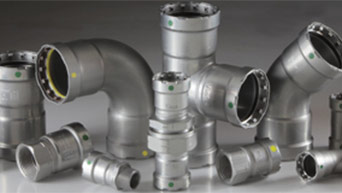
With so much focus on energy efficiency today, it may come as a surprise that the energy source with the lowest cost per unit of energy is the least utilized. That energy source is geothermal heat pumps.
One of the primary consumers of energy is buildings. According to the U.S. Department of Energy (DOE), buildings accounted for 41 percent of primary energy use in 2010. That is one-third more than that consumed by the industrial or transportation sectors. In fact, 24 percent of all energy used in the U.S. is for space heating and cooling and water heating. Implementing geothermal heat pump technology in place of traditional heating and cooling systems could create significant energy savings and reduce energy consumption.
Geothermal heat pumps are the most efficient and green alternative to traditional heating and air conditioning equipment. They tap the clean energy of the sun naturally stored near the surface of the earth and then transfer this heat to buildings in the winter and back into the ground in summer by circulating water through a closed loop of high-density polyethylene pipe that is installed either horizontally or vertically in the ground either beside or beneath a building.
According to the Environmental Protection Agency (EPA), “Geothermal heat pumps are among the most efficient and comfortable heating and cooling technologies currently available.” And the EPA’s Energy Star program says that qualified geothermal heat pumps are over 45 percent more energy efficient than standard options.
The EPA says that geothermal heat pumps can reduce energy consumption by as must as 44 percent compared with conventional air-source heat pumps and as much as 72 percent compared with electric resistance heating with standard air-conditioning equipment. And the DOE says geothermal heat pumps use 25 to 50 percent less electricity than conventional heating or cooling systems.
When in heating mode, geothermal heat pumps can provide as much as 400 percent of the energy that it uses, while standard electric heaters or gas-fired furnaces provide no more than 100 percent of the energy it uses. Similarly, in cooling mode, geothermal heat pumps offer higher energy efficiency ratings than other air-source heat pump systems. Geothermal heat pumps experience only negligible declines in efficiency in air temperatures exceeding 95 degrees, compared to air-source heat pumps, which struggle in such extreme temperatures and experience dramatic drops in efficiency.
One 3-ton residential geothermal heat pump can reduce peak summer electricity demands by approximately 2 kilowatts. If 500 homes use geothermal heat pumps, that reduction correlates to a reduction in peak power demand of a megawatt. This megawatt of saved energy is commonly referred to by energy experts as a “negawatt.” Negawatt power is a theoretical unit of power that represents an amount of energy saved as a direct result of energy conservation or increased energy efficiency. The concept of the negawatt is to cut electrical consumption through energy efficiency without reducing energy usage.
Geothermal heat pumps produce the thermal equivalent of a negawatt at a fraction of the installation cost compared to a megawatt of electricity produced by any renewable power source, including wind, solar, and biomass. In addition, those renewable power sources require the installation of expensive transmission lines required by power plants that are not needed by geothermal heat pumps.
Geothermal heat pumps can also reduce the load on the often-strained electrical grid, especially in sweltering summer temperatures. In some densely populated areas, when the temperatures soar, consumer demand for air conditioning spikes, causing blackouts. Reducing the load on the electric grid with geothermal heat pumps can help prevent those blackouts.
In addition to reducing energy usage and costs, geothermal heat pumps also reduce carbon emissions, which is an important consideration as we look for ways to reduce burning fossil fuels to combat climate change. According to the Oak Ridge National Laboratory, one ton of geothermal heat pump capacity over a 20-year operating cycle would eliminate 21 metric tons of carbon emissions.
While 30 states and Washington, D.C. have enforceable Renewable Energy Portfolio Standards that require a certain minimum share of electricity offered by utilities come from specified renewable resources, only two states include the thermal load avoided by geothermal heat pumps as renewable.
More states need to recognize thermal load avoided as a renewable energy source. In addition, utilities should be able to receive credit for the negawatts of saved energy, as well as offer financial incentives to the customers for the installation of geothermal heat pumps.
